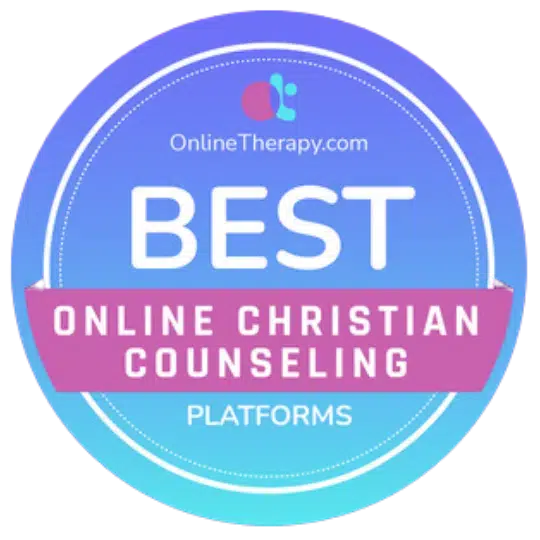“I have forged many things that I believe to be things of great beauty. Yet if God is not a part of them, they are entirely counterfeit and I have been robbed blind by the work of my own hands.” – Craig D. Lounsbrough
This month, we are zooming in to some of the ways that various forms of technology impact our relationships and daily life. This series of blogs is called “You’re Missing Out.” We are focusing on the holistic nature of this issue and how we can specifically identify and combat it’s negative effects in our lives and families. You can check out parts one, two, and three here. Today, we focus on a few serious negative social and relational issues that are can be perpetuated by the use of technology and social media.
Hebrews 10:24-25 makes a very important statement that suggests and encourages engaging in something that, in this day and age, has to be fought hard for: genuine, edifying community. It reads: “Let us think of ways to motivate one another to acts of love and good works. And let us not neglect our meeting together, as some people do, but encourage one another, especially now that the day of his return is drawing near.” Electronic technology plays a role in helping to motivate each other to acts of love and good works, but it can also promote a false sense of community and cause us to neglect our meeting together.
[Here Are Two Truths]:
1st: Social Media is not the Enemy
Facebook, Twitter, Pinterest, Instagram, and other platforms like them are not inherently bad.
- Updating friends and family: Facebook, specifically, allows me to have an awareness of the events going on in the lives of my cousins, aunts and uncles, parents, siblings, and even grandparents. I get to see highlights from my family member’s basketball games and dance recitals, hear job updates, celebrate birth and engagement announcements, and participate in campaigns to pray and/or raise money for relatives and family members with medical emergencies.
- Spreading important information quickly: When friends of mine were in Nepal this past summer at the time of the earthquakes, they were able to post about their safety and reassurance to a mass of friends and family without worrying about connecting to each one individually. Social media has played a massive role in finding missing persons as well. For example, the NYPD launched a huge campaign last year in an effort to catch criminals and find the missing. From their website: “Before social media, spreading the word about the missing was hampered by limited outreach to those in direct position to help. Amber Alerts were mainly broadcasted on television, radio and on highways. Distribution of missing posters was also limited, only displayed in communities in which the individual was last seen and or lived” (Danni Santana).
- Motivating one another to acts of love and good works: Everyday that I get on social media, my feed is inundated with encouraging scriptures, quotes, sermons, blogs, and photos of the beauty of creation (because I choose to set my preferences to show these things). My church is able to share sermons with the public world at large and share intimate prayer requests with a select group of prayer warriors. These platforms can be used in powerful ways to “…go into all the world and proclaim the gospel to the whole creation” (Mark 16:15). I try to contribute to the positive and life-giving benefits of accessing Facebook posting things that are in line with this rather than contributing by complaining, whining, engaging in negative attention-seeking behavior, and posting anything that makes fun of, undermines, hurts, cuts, or intentionally offends. What if we all committed to doing that? Social media is a PRIVILEGE (not something we are entitled to), and we should wield it responsibly to encourage people and offer them hope in a sea of hopelessness, empathy in the midst of tragedy, and violent peace in the wake of terrifying, graphic news stories.
2nd: The Enemy can Use Social Media
Facebook, Twitter, Pinterest, Instagram, and other platforms like them are not inherently bad… but they can be used to abuse, mistreat, manipulate, hurt, isolate, and kill.
- Bullying: There are countless studies that have been done and are being conducted on the link between cyberbullying, depression, and suicide. A leading government-sponsored website states that “Cyberbullying” simply means “bullying that takes place using electronic technology… Examples of cyberbullying include mean text messages or emails, rumors sent by email or posted on social networking sites, and embarrassing pictures, videos, websites, or fake profiles… Kids who are being cyberbullied are often bullied in person as well. Additionally, kids who are cyberbullied have a harder time getting away from the behavior.” This is a very serious issue and we all (not just parents) need to be made aware of it. We need to help educate our children and others in our lives about this and construct boundaries and safety measures that prevent the likelihood of this happening online. Check out these resources for helpful tips and information:
- Prevent Cyberbullying: http://www.stopbullying.gov/cyberbullying/prevention/index.html
- Christian research-based education about Bullying: http://www.focusonthefamily.com/parenting/schooling/bullying/bullying
- Un-quality Time: Look at the pictures at the top of this blogpost. They are taken by photographer, Eric Pickersgill (all images via www.removed.social). He makes this haunting statement about the subject of his work:
“Despite the obvious benefits that these advances in technology have contributed to society, the social and physical implications are slowly revealing themselves. In similar ways that photography transformed the lived experience into the photographable, performable, and reproducible experience, personal devices are shifting behaviors while simultaneously blending into the landscape by taking form as being one with the body. This phantom limb is used as a way of signaling busyness and unapproachability to strangers while existing as an addictive force that promotes the splitting of attention between those who are physically with you and those who are not.”
How strange we must look sharing space and environments, physically, and failing to actually communicate. It’s no wonder that we have “communication problems” (the number one issue that brings people into our counseling offices), and problems with intimacy. Set aside time. Prioritize coffee and hiking dates with friends and loved ones. Set boundaries around the use of electronic tech and TV watching. Go outside and walk. Serve the homeless. Get involved in a church. Read and/or pray together before bed. Play a board game. Go get ice cream. Go to a bookstore, the public swimming pool, mini-golfing, planetarium, zoo, etc. There are so many ways to fight against the passive scrolling, checking, and texting that distracts from making meaningful memories.
- Glorification of Partying and Substance Abuse: Another way that the enemy uses social media is to promote the “idea” of meaningful community and acceptance as portrayed by perpetual partying. I sometimes check in on certain friends and family via social media and find myself surprised to see, what seems like, constant binge drinking and substance abuse. This breaks my heart. The CASAColumbia survey also looked at the impact of this new phenomenon and discovered that “a staggering three-quarters of teens between the ages of 12 and 17 years old admitted that seeing photos of fellow teens using drugs on social media encouraged them to do the same.” Check out the survey results and statistics here. I used to be very deep into this party lifestyle myself and never considered that my behavior could be influencing children and teens who are struggling and vulnerable. I can attest to the fact that this behavior is a cover-up and way to compensate for poor coping skills, lack of deep, genuine connection and intimacy with others, major insecurity about self, and unresolved bitterness, pain, and hurt. I find some days that I am still fighting the urge to turn to substances to numb some of these issues. But even through confronting them and healing from them have been some of the toughest things I’ve yet to face, the freedom I feel now is the greatest reward. This is possible for all of us, no matter how lost you may feel.
- Isolation and Counterfeit Community: This is where we ‘neglect our meeting together.’ Listen to me- being informed and aware the lives of the lives of our family, friends, and acquaintances we met once at a conference based on their “highlight reel” does not mean we know them, or that we are known by them. We all, every single one of us, long to be known. “To be loved but not known is comforting but superficial. To be known and not loved is our greatest fear. But to be fully known and truly loved is, well, a lot like being loved by God. It is what we need more than anything. It liberates us from pretense, humbles us out of our self-righteousness, and fortifies us for any difficulty life can throw at us” (Timothy Keller). We were made for ‘face-to-face-ness.’ When we neglect our ‘face-to-face-ness,’ we deprive ourselves of the authentic connection that we crave. Counterfeit community is a temptation because it takes less work and doesn’t require us to get ‘messy’ with people. Seeking relationship with someone from behind a computer or Iphone is like trying to eat a meal standing in the parking lot of the grocery store staring at it. We must ‘go in’ and get the ingredients we need to make the meal that will satisfy our hunger, and the same is true of real relationship. So ‘go in’ and do the work, I promise you will experience the contentment and fulfillment you are seeking. We get to know aspects of the character of God through authentic, healthy relationships. Healing is experienced in community.
“The culture of ‘busy me’ leads to a disconnected ‘we’” (Clinton Power)







